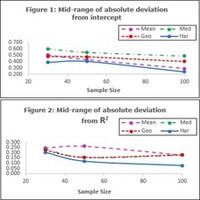In an era where sustainability is paramount, the creative repurposing of agricultural waste materials is emerging as a powerful approach to combat pollution and foster cleaner chemical processes. One significant advancement in this field involves the use of natural or chemically modified agricultural waste materials as biosorbents for removing pollutants, including pharmaceuticals, dyes, and heavy metals from water and wastewater.
This approach not only aids in mitigating the adverse environmental impacts of these contaminants but also transforms agricultural waste into a valuable resource, contributing to a circular economy. Researchers are exploring the potentials of agricultural waste materials such as rice husks, plant stems, bagasse, coconut shells, oil palm wastes, and fruit peels. These materials exhibit remarkable adsorption capabilities when properly treated and engineered, serving as highly effective adsorbents. The agricultural waste capture and remove pollutants, resulting in cleaner and safer water sources for communities and ecosystems.
Furthermore, there is a growing interest in utilizing agricultural waste materials as catalysts, catalyst supports, and feedstocks in various chemical reactions, especially in the production of biofuels and biodiesel. Waste materials such as rice husks, oil palm wastes, bagasse, shells, and peels have found valuable applications in the production process of biofuels. This approach reduces the reliance on energy-intensive and environmentally harmful processes while converting waste materials into valuable resources. These innovations are propelling the green chemistry revolution, contributing to cleaner fuel and chemical production, reducing our ecological footprint.
By embracing these practices, we are paving the way for a greener, more sustainable future where agriculture, industry, and the environment coexist harmoniously, leading to a cleaner and healthier environment for all.
Figure 1: SEM micrographs of (a) Pineapple plant stem (PPS) (b) Oxalic acid modified PPS at 1,000X magnification
Figure 2: Effects of adsorbent dosage on the uptake percentage of Basic Blue 3 (BB3) in single dye solution using pineapple plant stem (PPS), oxalic acid modified PPS (OAPPS) and quaternized OAPPS (Qua/OAPPS)
References
- S–L. Chan, Y. P. Tan, A. H. Abdullah and S–T. Ong, “Equilibrium, kinetic and thermodynamic studies of a new potential biosorbent for the removal of Basic Blue 3 and Congo Red dyes: pineapple (Ananas comosus) plant stem”, Journal of the Taiwan Institute of Chemical Engineers, 61 (2016) 306–315.
- Pam, A. H. Abdullah, Y. P. Tan and Z. Zainal, “Optimizing the route for medium temperature-activated carbon derived from agro-based waste material”, Biomass Conversion and Biorefinery, 13(1) (2023) 119–130.
- Y. Albalushi, G. Abdulkreem-Alsultan, N. Asikin-Mijan, M. I. Saiman, Y. P. Tan and Y. H. Taufiq-Yap, “Efficient and stable rice husk bioderived silica supported Cu2S-FeS for one pot esterification and transesterification of a Malaysian palm fatty acid distillate”, Catalysts 12(12) (2022) #1537.
About Author
 |
Dr. Tan Yen Ping
Department of Chemistry
Faculty of Science, Universiti Putra Malaysia
Expertise: Analytical Chemistry, Catalysis, Material Chemistry
Email: typ@upm.edu.my |
Date of Input: 26/12/2023 | Updated: 26/12/2023 | naszroul
MEDIA SHARING




























